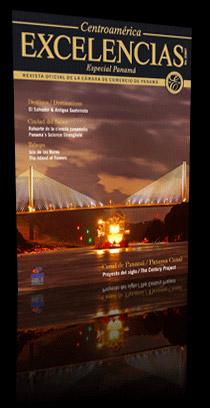The Embera Indians
The trip to the encounter of the Embera Indians is a special attraction because, in addition to learning about their traditions and customs of these open-minded and kind people, the view is a once-in-a-lifetime experience
A hardly known, yet jaw-dropping and gripping tour is the visit to one of the Embera Indians' reservations within the boundaries of the Chagres River National Park. This journey is quite a pack-walloping experience that puts us in touch with the indigenous civilizations that has helped like no other whip Panama's current personality into shape.
A few years ago, representatives from the Embera Indians cut a deal with the Panamanian government to move into the Chagres River National Park and committed themselves to be the facility's caretakers. That's one of the settlements we paid a visit to. The Embera Indians live in an area that's barely 43 miles away from Panama City, the location we departed from for our trip.
THE RIVER OF LIZARDS
The Chagres River has enormous importance in Panama's lifestyle. It flows into the Gatun Lake, a major water supplier for the Canal. In addition, its natural course delivers drinkable water to the cities of Panama, Colon and La Chorrera. It's somewhere between 328 and 1,312 feet wide and sailing down its waters makes us feel like ancient adventurers.
The Chagres River National Park starts out nearly 25 miles away from Panama City. It's located halfway between the Panama and Colon provinces. It was created for the preservation of the tropical ecosystem that abounds around the river. The watercourse and the Alajuela Lake are the top attractions around here, not to mention the historic highway -a route scoured by Spaniards when they used to carry the gold and silver from their South American colonies and the indigenous settlements.
The Chagres is a perfect location for the practice of rafting, while the lake provides an ideal atmosphere for anglers, swimmers, windsurfers and water skiers. Moreover, visitors may camp out for birdwatching and just to spend a lovely night in the jungle.
As far as the wildlife is concerned, the white-tail deer, monkeys and toucans are plentiful. The flora portfolio encompasses a broad variety of orchids that rub elbows with leafy pink and yellow acacias.
The enthralling details start the moment you try to get in touch with the Embera Indians. Getting to where they are takes a 45-minute ride in a motorized canoe from the nearest wharf. A representative picks up visitors in his engine-powered dinghy -a sort of small canoe seating up to ten travelers. In this boat that plows past the waters of the Chagres River -a.k.a. the River of Lizards- we get to the Embera Indians' village.
A DANCE IN OUR HONOR
The members of the community go out to hail us, wearing their traditional garments: men in gaudy loincloths and women in skirts, naked to the waist and sporting motley necklaces they call chaquiras. They dance for us and show us their craftworks: creels and works created with fruits, seeds and wood.
Among the houses propped on wooden stilts, featuring conic roofs and orchards next to them, it amazes us to a brick house. They tell us that's the local school. A professor from Panama City comes around every week to teach them the basic knowledge.
WHO ARE THE EMBERA INDIANS?
The Embera Indians are part of the country's largest indigenous group: the Chocoes. With a total population of 14,700 individuals, they enjoy a democratic system that entitles men and women with equal rights. They stick to their ancestral traditions and lifestyle, as well as old-timed hunting, fishing and collecting techniques.
They're great lovers of nature and staunch defenders of the environment, and take pains in striking a biological balance in the zone the live in. Until recently, the only weapon they relied on was the archaic peashooter and their poison-dipped darts, a tradition they haven't given up on yet.
Strangers to weather impairment, the only clothes they put on are the tiny leather loincloths, though they sometimes wear leather vests when it's time to drop by town. Their bodies are embellished with pigments, especially jagua (the fruit of a tropical tree). When youngsters reach puberty they hold down festive rituals during which they gulp down abundant chicha (fermented maize).
The Embera tribe hails from Darien, an area of Panama that abuts Columbia. Most of them still live there. The region's isolation has made it the least developed zone of the country and, in the same breath, one the world's richest in terms of biodiversity. The deepest jungle areas remain vastly unexplored. It was declared a National Park in 1981 and a Biosphere Reserve a couple of years later, in 1983.
It was in Darien where Vasco Nunez de Balboa became the first European settler to make out the Pacific Ocean back in 1513. Darien is inhabited by a number of autochthonous civilizations. In addition to the Chocoes -their name stems from the Colombian region of Choco and they are divided in Embera and Wounaan Indians. This is the place the Kuna Indians and other small Hispanic-indigenous settlements call home.
Ecologically speaking, right before our very eyes stands one of the richest regions on the face of the earth, home to North America's southernmost flora and wildlife, and South America's northernmost species. It's nothing but a one-and-only ecological bridge in the world with the Darien National Park lying next to it for better protection.













